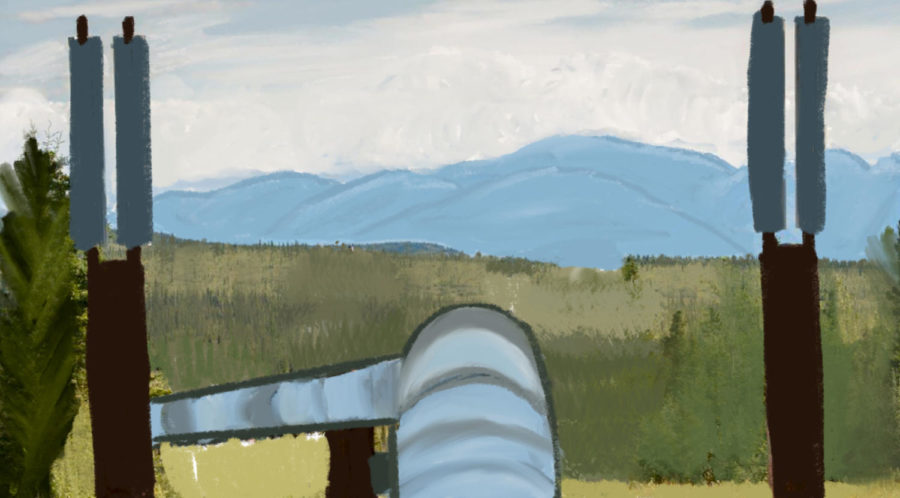The Thunder of Willow
May 7, 2023
The Biden administration decided to pass The Willow Project, on March 13 of this year, a decision that has gained quite a reaction from the general public.
The Willow Project references the American oil company ConocoPhillips’ plan to drill out of government-owned property in Alaska’s north slope, requiring the Biden administration to approve the project. Because of the nature regarding climate change currently, and the global need to reduce fossil fuels in the atmosphere, there have been various complaints regarding the Willow Project and what it not only means for the future of our climate, but also the future of all the species in the areas where oil drilling will take place.
According to the administration of the project, this event will release 9.2 million metric tons of carbon into the atmosphere yearly. When factoring in the amount of energy and material that will be used to make the equipment and facilities for the project itself, the overall number will likely be much higher. This poses a big threat to the reforms being made by the Biden administration and globally in order to mitigate climate change.
On top of the destruction to an already declining climate, the Willow Project is also predicted to eradicate species within Alaska by polluting the atmosphere and destroying land. The damage to an already decaying planet is what has caused many to be in such an outrage.
This includes Alaska’s mayor, Rosemary Ahtuangaruak, who herself talks about how the land of her home has changed due to the advancements of the oil industry and what it means for not only the environment but the culture of the area.
Ahruangaruak explains, “The animals are no longer in areas where your grandfather taught your husband to hunt and where he taught his son .. now there’s a gravel mine related to oil and gas development.”
However, along with the cons to the environment that the willow project proposes, there are also benefits that many people have pointed out.
The Willow Project has been pointed out as a huge step for the U.S. to not rely on foreign oil for the national oil supply. This initiative will provide oil from our own soil, with cheaper prices and effectively excluding the cost of foreign relations being compromised and more conflicts occuring due to the necessity of oil.
Along with relying less on foreign oil, it also helps create numerous jobs for Americans. In the current economy of post Quarantine problems and especially inflation, more job opportunities are what can help boost the economy and help the citizens who were specifically financially affected by Covid and current inflation.
However, Annie Nguyen, a DVHS AP environmental science and environmental chemistry teacher, provides how the Willow Project may hold an economic benefit but at the cost of a decaying environment.
After addressing the positive claims about the Willow Project, Nguyen explains “ [However] we’re seeing this [as a] short term, positive gain but in the long term, even if it is positive now, it will become negative later because oil is a finite resource.”
Ngyuen also brings up the point about how not just the fossil fuels from the oil cause an environmental impact, but the oil itself in its raw form can be just as lethal.
She explains, “ anytime that you’re dealing with something like oil, whether it’s in the ocean or on land, any oil spill is going to have a dramatically negative effect on an ecosystem … organisms might get trapped in it [soil or water] or contaminated with it.”
She continues on to explain that oil spills become a big risk factor especially because this oil line will travel throughout the country from Alaska, creating more available errors for oil spills. These lines specifically are planned to also disrupt many Native American communities and their land.
Alaska to this day still contains many Native American tribes and groups. To be precise there are five. major groups: Northern Eskimos (Inupiat), Aleuts, Interior Indians (Athabascans), Southern Eskimos (Yuit) and Southeast Coastal Indians (Tlingit and Haida).
The projects will directly affect these communities and many more whose communities are close by the building sites.
In her explanation, Nguyen presents as to how drastically these communities will be affected by the construction, “ They are dealing with possible water contamination, soil contamination and air quality is gonna go down because of the different refining processes that might be taking place.”
The Willow Project has effectively caused the general public to be split between whether it was truly a smart decision on behalf of the Biden administration. While state lawmakers are finding the economic gains to be enough persuasion, there are still multiple climate. groups who are pushing against the project, like Earth Justice and the Sierra Club.





